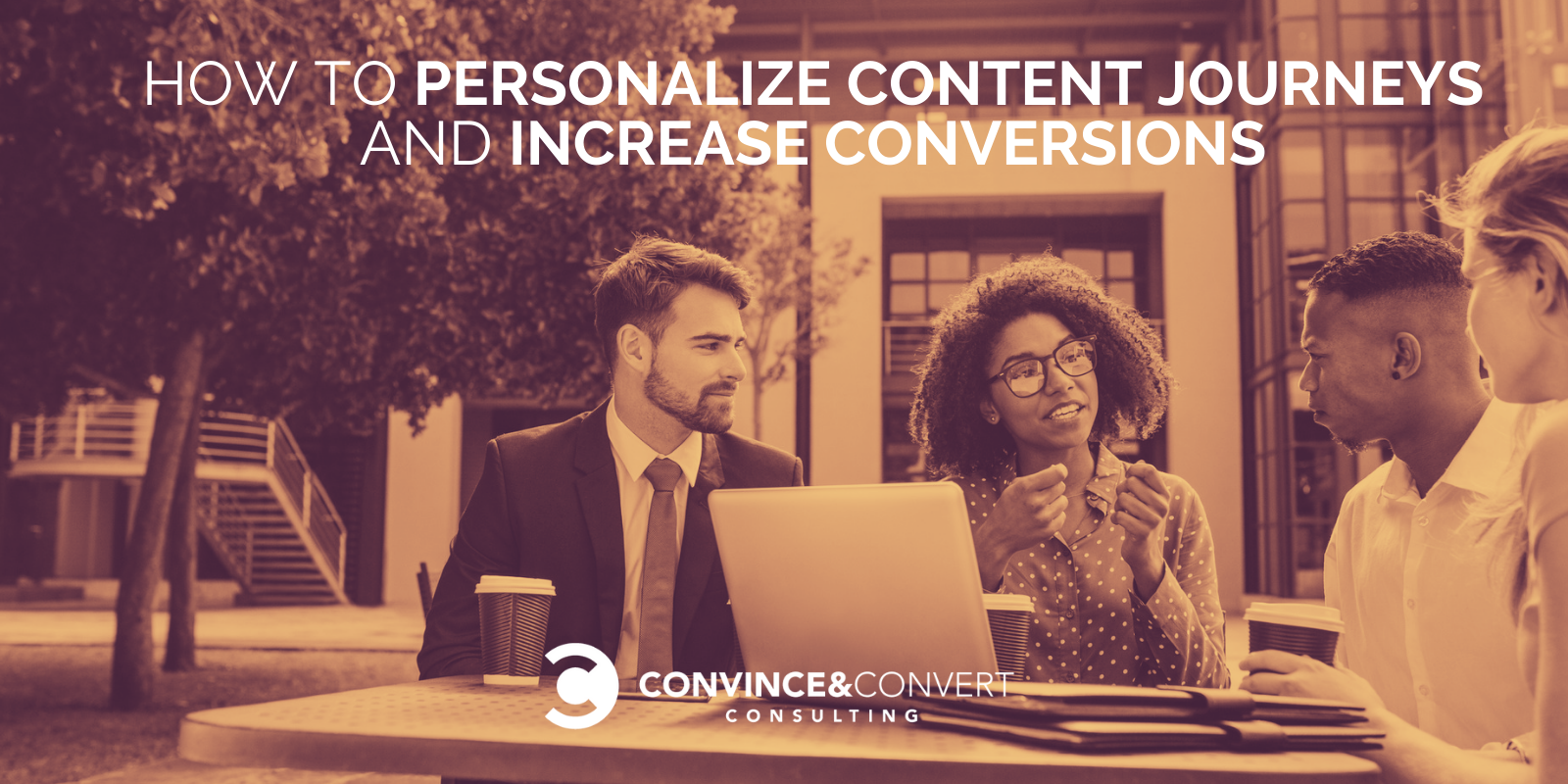
Today, many consumers expect to have a buyer experience tailored to them. They want to visit your website, find the right content and go with the most appealing offers – They don’t want additional content that is not relevant to them.
Personalizing your content journey now is one of the most effective ways to increase conversions.
For example, one study found that 92% of marketers consider personalization very valuable, while 49% of companies look at personalization as a top priority.
In another study by Econsultancy, 94% of companies that used personalization got an increase in conversion rates. Clearly, personalization is becoming increasingly important, and marketers need to start personalizing content journeys or, if they’ve already started, keep improving their personalization tactics.
In this guide, I’ll show you five steps to personalize content journeys in your campaigns and improve conversions.
Create a buyer persona
When you think of personalizing your content for visitors, one of the best and most realistic ways is to do so for a few groups of people. These are your audience/buyer personas.
Your buyer persona is a document that contains as many details as possible about your ideal customers. This helps you determine the right content at each stage of your funnel by addressing a specific prospect’s pain points and promoting the offers that are most relevant to such prospect.
For your buyer personas, you should collect as many details as you can to ensure you know enough to personalize the content for each. These include:
- Demographics: name, age, gender and location (particularly important for those who target various locations)
- Income
- Pain points/needs
- Interests and hobbies
- Favorite marketing channels
If you promote various products on your website, the profile of an ideal customer for one product might be different from another product. All you have to do is create a few buyer personas that capture your ideal customers for each of your product categories. Once you have these personas on hand, it will be much easier to create content for each buyer persona in different stages of the sales funnel.
Here’s an example of a buyer persona from the Buyer Persona Institute.
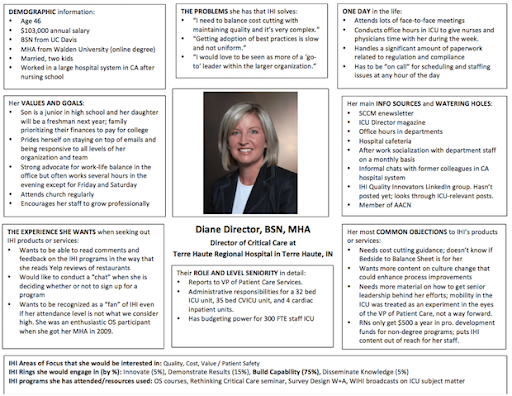
Use personas to create valuable content
After creating your buyer personas, your next task is to create a sales funnel for each. How do you run these sales funnels? You do so through relevant content at each stage.
When these pieces of content are created, they’re done with your buyer persona in mind. Even though all the pieces of content will live on your website, you can segment a visitor who fits into any of your buyer personas. And, consequently, you can send the right content to them at the appropriate stage in your sales funnel.
However, you will need to plan content for multiple channels — from your website and blog to the emails you send them to the social media updates you post.
Personalize website content journey
Even though it’s yet to be mainstream, providing personalized content on your website is one of the most effective uses of personalization.
For example, a really interesting case study from Oktopost, a cloud software company, shows that by recommending the right content to each visitor, they saw a 31% lift in lead conversion rate:
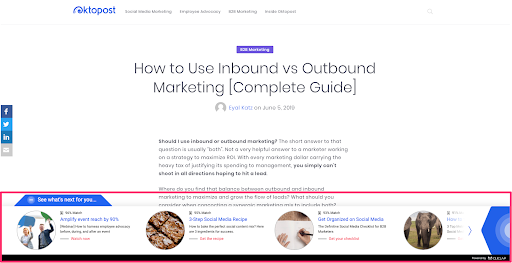
But to personalize website content, you need technology to help out.
And this is where a solution like CliClap comes into the picture.
It uses ML (Machine Learning) to predict and apply the next best action for each of your website visitors. What’s unique about it is, for each visitor, the platform builds content journeys, which are optimized for engagement and conversions, hands-free.
Therefore, you’re able to capture more nurtured and qualified leads into your sales funnel.
Likewise, if they download a PDF from your website, you can even track how they’re interacting with that resource – and look for ways to further personalize that content to increase interactions and engagement.
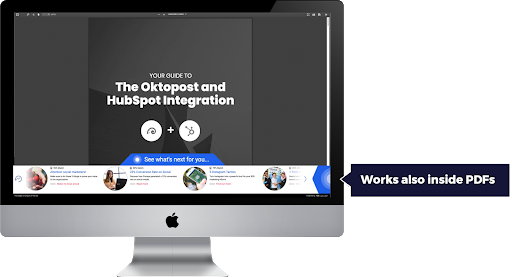
Because your marketing campaigns on various channels direct users to your website with the aim of converting them into customers, it makes sense to tailor the content they see based on who they are, where they’re coming from (i.e. the traffic source) and their past behavior, if that knowledge is available.
For users coming from other marketing channels and users visiting directly, you can customize your content based on their behavior. As a result of this, each visitor sees pieces of content relevant to them.
On another note, your landing pages are an important avenue to apply personalization techniques. The best practice for your marketing campaigns is to refer users to a landing page relevant to the campaign. Through this, you can capture their details for further nurturing in the future.
After a visitor submits their details through your landing page, you can present more content on your website relevant to the landing page offer or product.
So, if a prospect submits their information on a landing page at the top of your sales funnel, suggested content should move them to the next stage rather than try to sell your product.
With personalized website content journeys, prospects slide further into your sales funnel by having the right content at the right time. Ultimately, this leads to higher conversion rates, more time spent on site, lower bounce rates and so on.
Send email drip campaigns based on a subscriber’s interest
One of the biggest and most popular means of personalization is your email campaigns. To put it simply, if you’re yet to implement personalization in your emails, you’re far behind your competitors.
For starters, emails with personalized subject lines are likely to be opened 26% more than non-personalized subject lines.
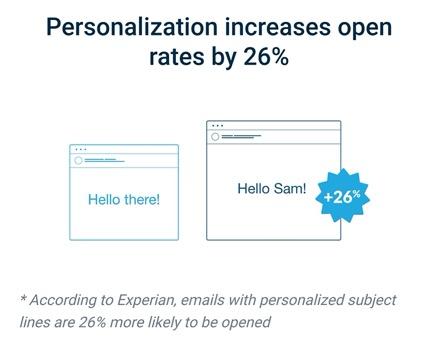
This points to the reality that personalized emails are vital to having your emails opened and increasing engagement. What are some functions and benefits of personalized emails in your sales funnel?
- Lead nurturing
- Brand building
- Recovering abandoned carts
- Onboarding new customers
- Upselling to current customers
- Sending promotional offers
Without personalization, it’s almost impossible to achieve these. To turn a cold lead into a qualified prospect, you need to send pieces of content that make them aware of their problems and how your product can solve those problems.
See this example from Paper Style:
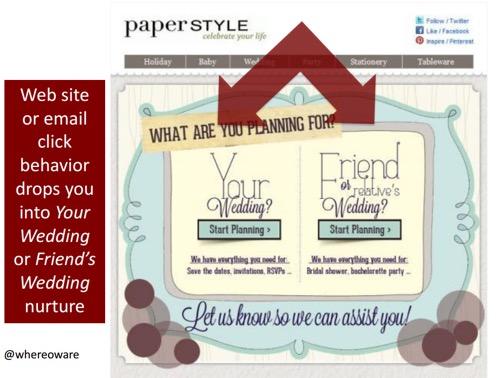
The choice a visitor makes here determines the emails they’ll receive. By doing this bit of personalization, Paper Style got a 244% boost in open rates, a 161% increase in click-throughs, and a 330% increase in revenue per mailing.
Even after a prospect becomes a customer, you still need to continue sending them emails during onboarding and to sell more products to them in the future.
Fortunately, you can automate your personalized emails with your email service provider. This allows you to send emails to your prospects and customers based on their behaviour and the actions they take – and fortunately, most email marketing tools now offer this type of automation.
Did they read your email about a product? Did they click through to the blog page? Did they proceed to check the product page? Then you can send them an offer about that product.
Meanwhile, you can create different drip campaigns for different situations. Then, add or remove your subscribers from these campaigns based on your criteria. An automated email tool you can use is ConvertKit. It provides robust automations and is easy to use, even for a beginner.
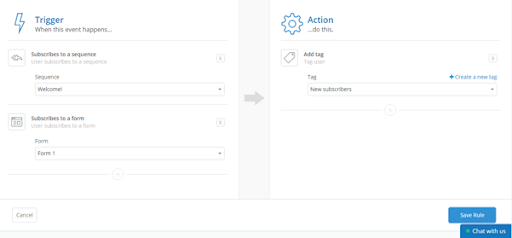
Personalize content based on user demographics and other factors
While you can personalize your website content to each visitor, personalization based on some user demographics for a group of users is also effective. Added to that, other factors affect your visitor’s choices and should come into play during personalization.
Some common demographic information you can use to personalize your pages are:
Location
If you offer a service available across cities or countries, you can personalize your content based on the location of your visitor. In some cases, an offer might be available in specific locations and they should only appear to people from those places.
For example, here’s what the MobileMonkey website uses location to advertise their offer, depending on where you’re visiting from:
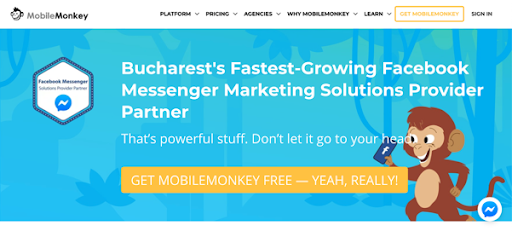
Time of visit
During different times of the year, many factors affect people’s needs and shopping patterns. Some common periods to consider are:
- Seasons of the year
- Month
- Holidays
- Time of the day
With these considerations, your website can change to reflect visitors’ needs, depending on the time and date they’re visiting; for example, showing certain offers for Christmas or even changing the offers you show based on both location and time of visit.
Benefit they’re seeking
Is your visitor looking for the cheapest product or plan they can find? Or is quality their most important need? Or do they have an affinity for a brand?
You can personalize your website based on these and more benefits to show the right content to a prospect or customer.
Conclusion
With the growth of martech, potential customers have become very picky. In other words, prospects want experiences that are tailored to their needs.
Considering how vital content has proven to be during the conversion process, personalizing your content journey can provide a considerable boost in conversions and help you make more sales.

